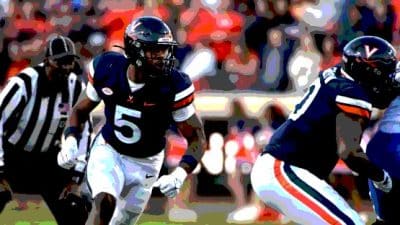
“While there are many important ecological benefits that accrue from living in groups, infectious disease transmission may be an important cost to sociality,” said Kathleen Alexander, associate professor of wildlife conservation in Virginia Tech’s College of Natural Resources and Environment. According to a recent study of endangered social carnivores by Alexander and lead author Claire Sanderson, a research associate in Alexander’s lab, nearly half were threatened by disease compared with only 3 percent of solitary carnivores.
Alexander, an affiliate of the Fralin Life Science Institute, is principal investigator on a new study to determine how sociality and infectious disease interact and influence group and population level survival in social wildlife species. Funded by the National Science Foundation’s Ecology and Evolution of Infectious Diseases Program initially for $1.4 million, and expected to total $1.8 million, this four-year study will focus on the highly social banded mongoose in Botswana.
The banded mongoose population in this region of Africa is threatened with a novel, emerging tuberculosis pathogen, Mycobacterium mungi, discovered by Alexander in 2000. This organism is closely related to human tuberculosis caused by the pathogen M. africanum.
“Group living and cooperation between individuals offers important positive benefits on the production of young, acquiring food, and avoiding predators,” Alexander said. “However, a population or group is at an increased risk of extinction when the number or density of individuals falls below a certain threshold due to ecological and/or genetic factors. This is referred to as the Allee effect.
“Yet increased numbers of individuals can lead to increased disease transmission, a potentially important risk to group-living species.”
The research team will study this process in Alexander’s long-term study site in Northern Botswana, where mongoose troops occur across both protected areas and unprotected, human-modified landscapes.
“Using this system, we will characterize the processes, factors, and thresholds that shape Allee effect-infectious disease dynamics and the impact this may have on pathogen emergence and persistence in social species,” Alexander said, “allowing us to better manage emerging diseases that involve group-living species, particularly for zoonotic diseases that threaten both animal and public health. Developed modeling tools can be applied to many emerging pathogen systems, such as Ebola transmission in wild gorillas.”
The project will support an expansive post-doctorate and graduate student training program in the U.S. and Botswana and will launch a program developed by Alexander in which Botswana and U.S. minority undergraduates will be partnered for active learning in science and infectious disease from a global perspective.
Alexander has also developed a conservation education program for 250 students from two primary schools in Botswana. The project will develop and deliver two educational modules to encourage youth engagement in the study of emerging disease and application of modeling tools.
Both the research and outreach programs will be conducted in collaboration with the Center for African Resource: Animals, Communities, and Land Use (CARACAL), a grassroots nongovernment organization established in the study region in 2000 by Alexander and Mark Vandewalle. The center provides a fully developed field laboratory and training facilities supporting project activities.
Alexander, who has been working in Africa for over 20 years, is an expert in disease ecology and a wildlife veterinarian. Her work is focused on understanding emerging disease at the human-environmental-domestic animal-wildlife interface, exemplifying the one health approach. She has unique experience in incorporating scientific advances into high-level policy development and governance in Africa through her position as chief wildlife veterinarian for the Botswana Department of Wildlife and National Parks and ecological advisor to the Office of the President of Botswana.
Several members of the research team are from Virginia Tech:
- Stephen Eubank, professor of population health sciences in the Virginia-Maryland College of Veterinary Medicine, and Bryan Lewis, research assistant professor, both of whom are with the Virginia Bioinformatics Institute’s Network Dynamics and Simulation Science Laboratory, have extensive experience in mathematical, computational, and statistical modeling and public health.
- Eric Hallerman, professor of fish conservation in the College of Natural Resources and Environment and a Fralin Life Science Institute affiliate, and Claire Sanderson, a research associate in fish and wildlife conservation, are molecular geneticists whose applied population genetics work focuses on both multicellular and microbial species.
- Eric Vance, associate research professor of statistics in the College of Science and director of the Laboratory for Interdisciplinary Statistical Analysis, provides extensive experience in coordinating large-scale project statistical support.
- Mark Vandewalle, adjunct member of the wildlife conservation faculty in the College of Natural Resources and Environment and CEO of CARACAL, is a wildlife biologist with a focus on ecosystem function in African savanna habitats.
- Jeffrey Walters, the Harold Bailey Professor of Biological Sciences in the College of Science and a Fralin Life Science Institute affiliate, does research directed at understanding the evolution of cooperative breeding and social behavior.
Other members of the research team include the following:
- Michelle Larsen, assistant professor at the Albert Einstein College of Medicine, is a bacterial geneticist studying tuberculosis dynamics across hosts.
- Jeffrey Shaman, associate professor with Columbia University’s Mailman School of Public Health, models and forecasts infectious diseases and their environmental determinants.
Alexander is one of few scientists to receive grants from both the National Science Foundation’s Ecology and Evolution of Infectious Diseases Program and its Coupled Natural and Human Systems Program. Learn more at the blogs for each project: Disease Ecology of the Social Banded Mongoose and Water Quality and Health in Botswana.










